Frustrated Locals Push for a Second Exit at Dumbo's York Street Station
Citing hazardous overcrowding at the York Street subway station, upset neighbors are sounding the alarm on the need for a second entrance to the F train depot — which sees frequent bottlenecks on its single staircase amid the area’s growing population.

Photo by Susan De Vries
Citing hazardous overcrowding at the York Street subway station, frustrated neighbors are sounding the alarm on the need for a second entrance to the F train depot — which sees frequent bottlenecks on its single staircase amid the area’s growing population.
The MTA promised in March to study the feasibility of adding a second entrance to the station, which sits on the border of Dumbo and Downtown Brooklyn, but they blew past a June 30 deadline to provide results for that study, and the agency has declined to announce a new timeline.
Meanwhile, the station at the corner of York and Jay streets continues to pose a hazard to straphangers, especially in the event of an emergency, said the local assemblymember.
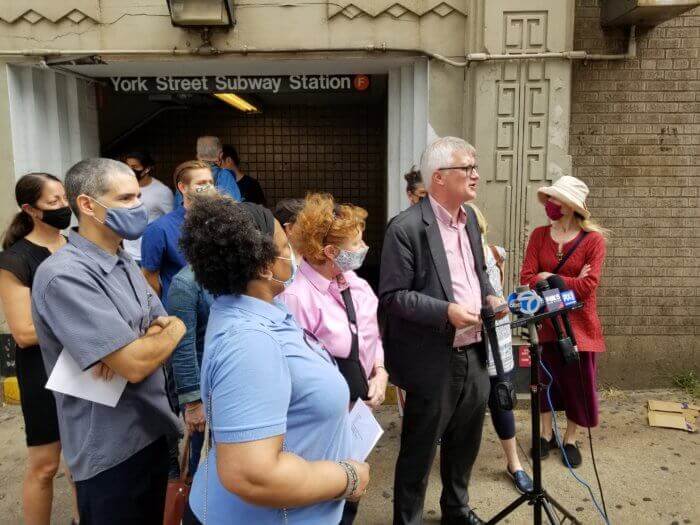
“If there’s anything that goes wrong, it could be a very dangerous situation,” said Jo Anne Simon at a Thursday press conference outside the station.
The MTA’s commitment to a feasibility study came after the city received a $17 million windfall from selling the government-owned air rights to a private company looking to build a new development at nearby 69 Adams Street.
Local Councilmember Steve Levin helped greenlight that proposal after receiving assurances the money would go back into Dumbo, including $7 million earmarked specifically for York Street — which included $1.5 million for the feasibility study, and $5.5 million as a “down payment” if the transit authority determines a second entrance is feasible.
But the MTA has not yet produced such a study, saying that the “complex nature of the station,” which is deeper than most, since it is so close to the waterfront, has inhibited the ability to quickly make a determination.
“We have been in regular communication with the community and elected officials on York St. issues,” said MTA spokesperson Eugene Resnick in a statement to Brooklyn Paper. “We are continuing to study a potential path forward and the study is still ongoing due to the complex nature of the station. We remain committed to briefing elected officials and community stakeholders.”
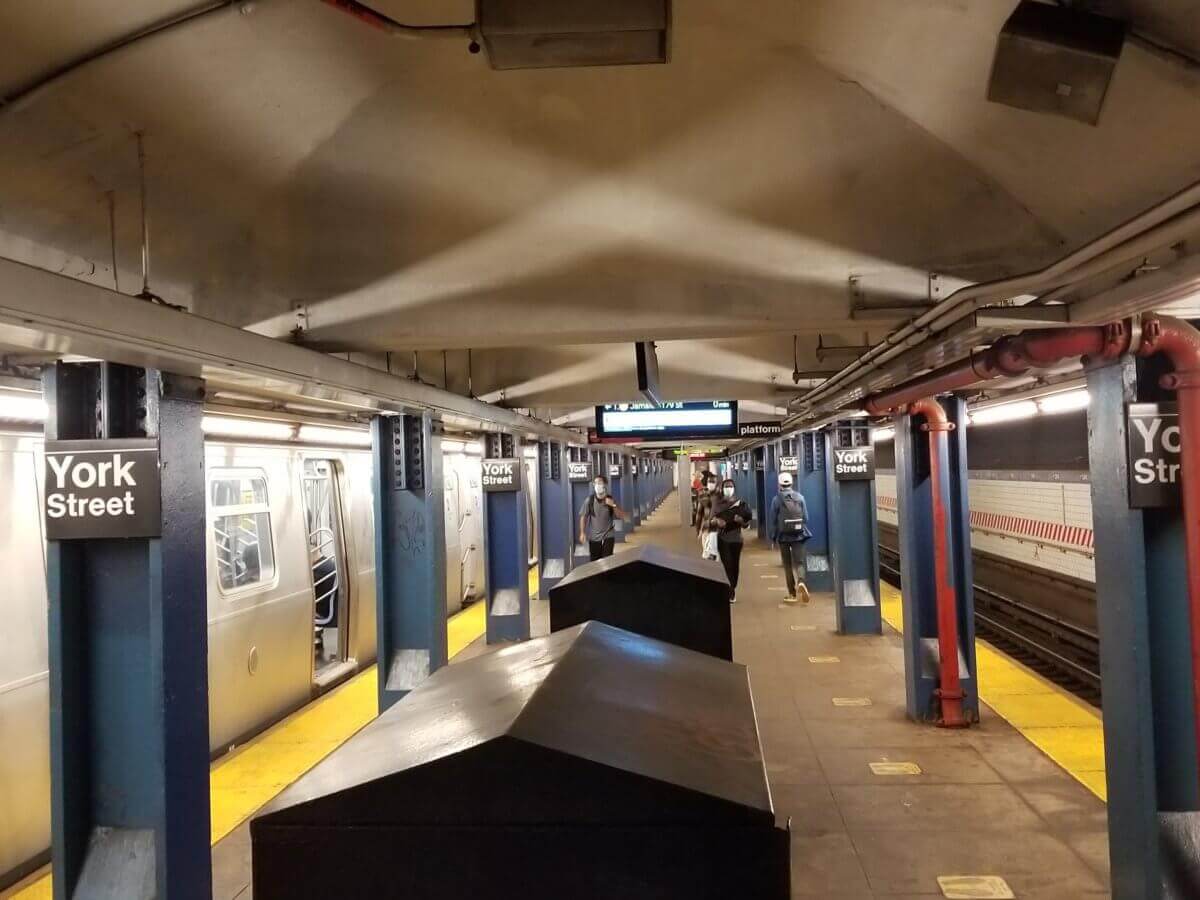
While Downtown Brooklyn has long been a heavily trafficked area due to its high-density of office space, along with many courthouses and municipal buildings, Dumbo has also seen a development boom in recent years for both residential and commercial buildings, which coincides with its increasing stature as a tourist destination.
But the York Street station, built in the 1930s, hasn’t been upgraded in tandem to handle the increased demand, causing substantial amounts of gridlock upon its narrow island platform and at its lone entrance, especially at rush hour.
“This is a station that was built at a very different time, when the patterns of use were very different, and a lot fewer people needed to come and go through this station,” state Sen. Brian Kavanagh said. “We’ve had an enormous amount of development in this community, it has taxed many of our resources, but this station stands out as a singular problem.”
MTA data shows the station’s average weekday ridership increased by 35 percent between 2015 and 2019, from 9,328 to 12,638, before ridership crashed in 2020, as it did across the system, due to the COVID-19 pandemic.
Electeds and advocates have been calling for a second entrance for years, and in 2016, architects Delson or Sherman even designed a potential second entrance with an elevator, but to no avail. Now, locals say, the outdated station is preventing Dumbo from growing to its full potential, and should get a second entrance with haste.
“We don’t have the infrastructure to meet the demand,” said Lincoln Restler, the Democratic nominee to represent the area in the City Council. “In fact, this train station is inhibiting the growth of our community. When you walk in and out of this train station at rush hour, it is scary.”
A 2003 fire showed exactly how the station’s layout can lead to disaster. When a Coney Island-bound F train pulling into the station went ablaze in July of that year, 140 stranded passengers were led by police to the south end of the platform when the singular entrance, at the north end, was engulfed in smoke; the cops were apparently unaware that the station had only the single egress. Cops then led passengers to an emergency exit 1,000 feet into the tunnel, according to the New York Times, and several straphangers were subsequently treated for smoke inhalation.
A similar catastrophe could be averted if a second entrance was added, electeds and advocates argue.
“This is a catastrophe waiting to happen,” Restler said. “This is a matter of literally life and death.”
Editor’s note: A version of this story originally ran in Brooklyn Paper. Click here to see the original story.
Related Stories
- City Agrees to Divert $7 Million From Air Rights Sale to York Street Station Improvements
- Pol Says Sale of Dumbo Air Rights Should Go Towards Improvements at York Street Station
- Will a New MTA Study Finally Bring a Second Exit to Dumbo’s York Street Station?
Email tips@brownstoner.com with further comments, questions or tips. Follow Brownstoner on Twitter and Instagram, and like us on Facebook.

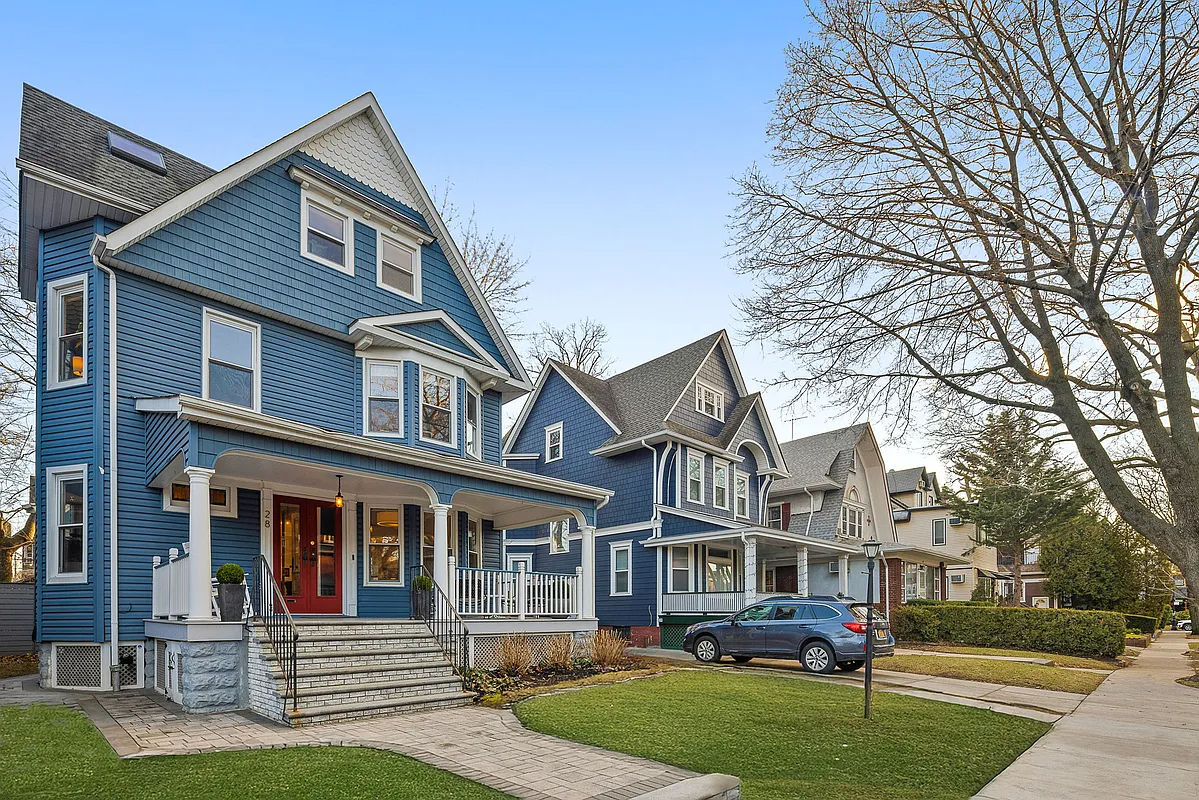
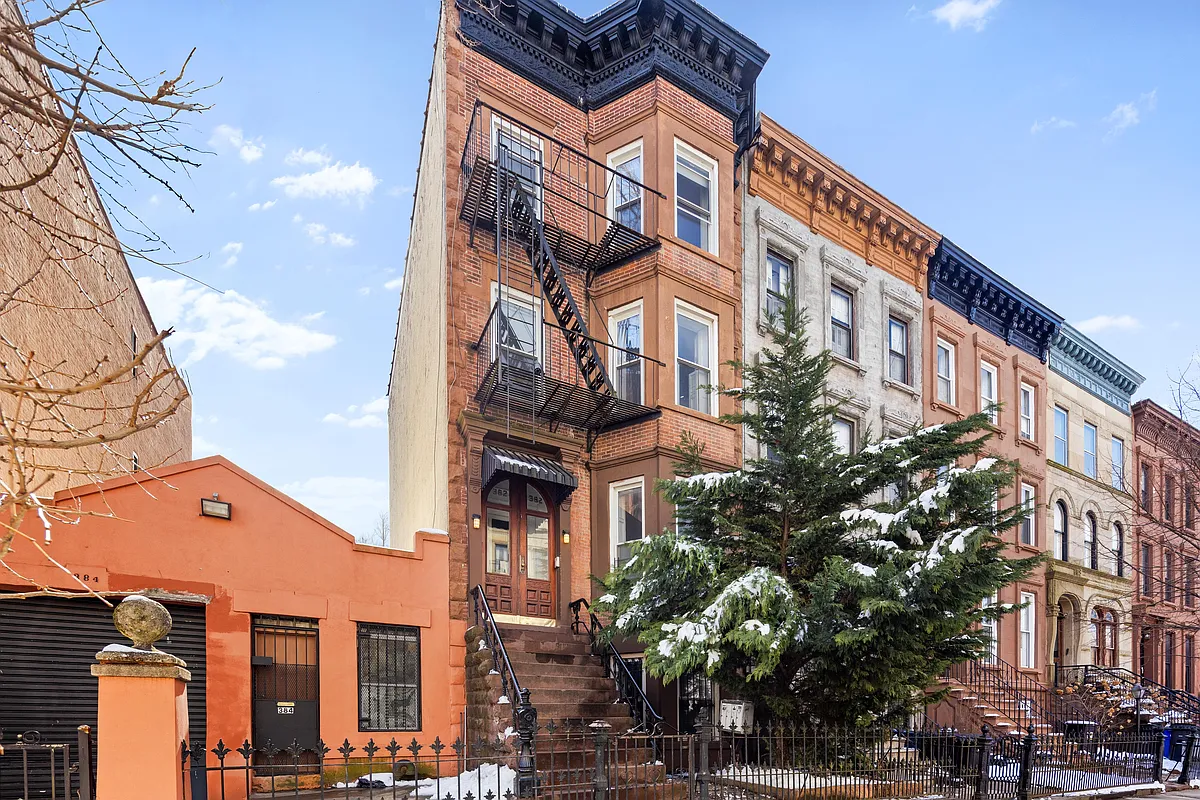

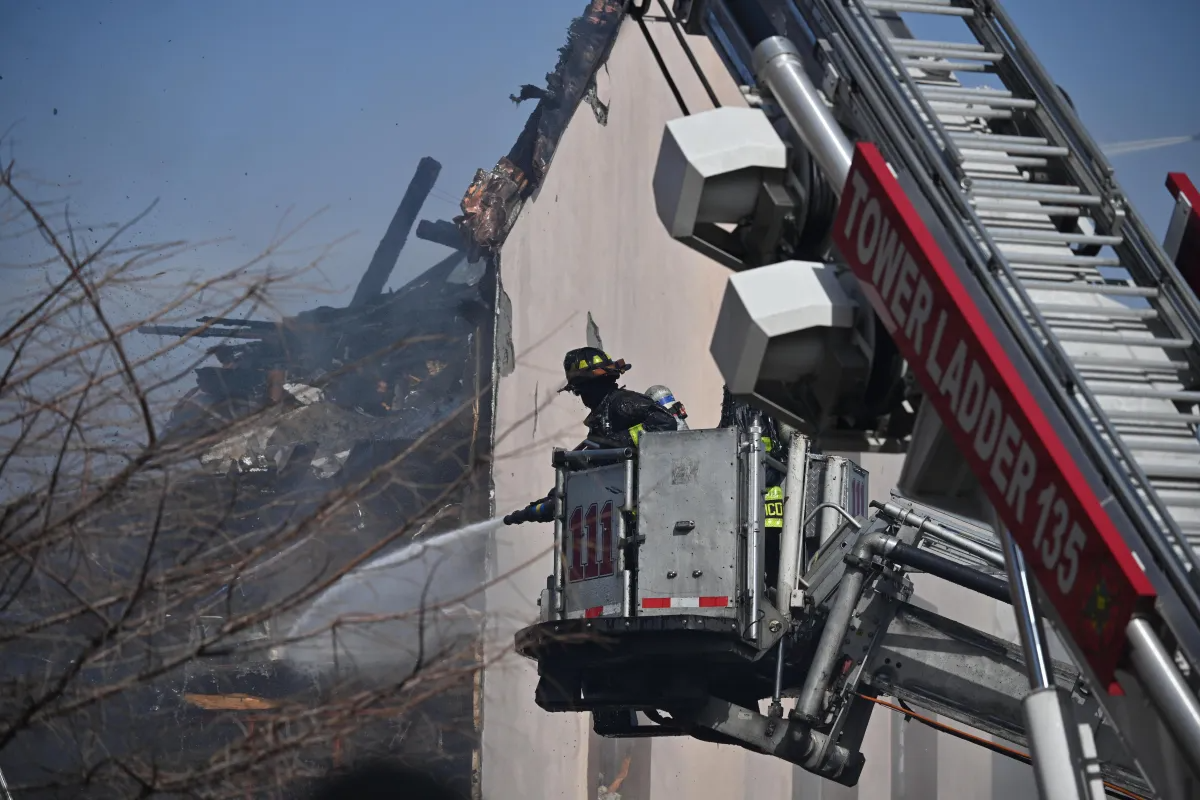




What's Your Take? Leave a Comment